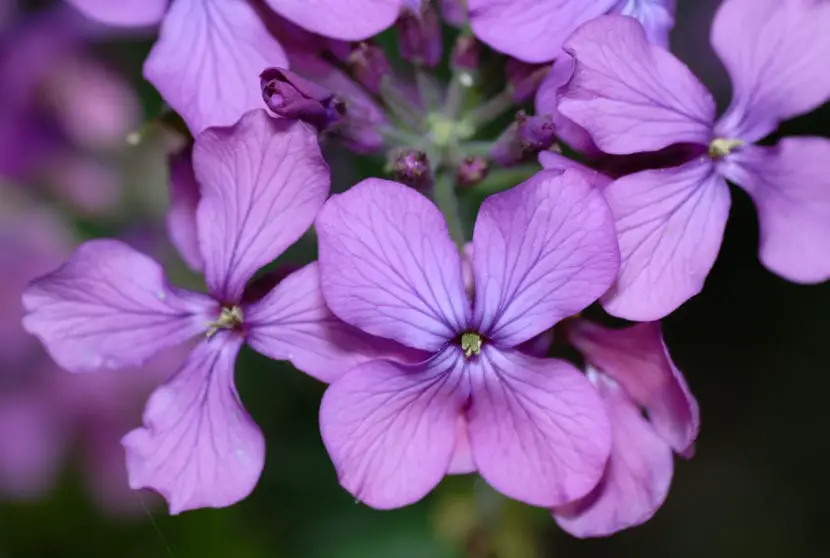
The lunaria annua it is a perennial herbaceous plant that can behave as a biennial if the weather is very cold. It has flowers composed of four petals of very cheerful colors: red, pink, white or blue. It is seldom for sale, since, although it reproduces very easily by means of seeds, it does not support transplants very well, so it is always necessary to try to sow it directly in its final location.
If you dare to acquire one, or several, or if you want to see them germinate, in this article I will explain what you should do to enjoy their beauty.

The lunaria annuaknown as the Silver Plant, Pope’s Coins or, simply, Lunaria, is a plant native to Europe and Western Asia that grows until the 40cm roughly, including the flower stalk, which, by the way, appears in spring. Its leaves are heart-shaped, with serrated edges, and are green. The seed pod is rounded, light brown in color when ripe.
Unlike other flowers, our protagonist dimly lit places are bestto the point that it can grow without too many problems in shady places. With this in mind, if you have a slightly dark area in your garden or terrace, do not hesitate to decorate it with Lunaria. It sure looks great .

Despite being very tolerant of transplants, it is very easy to care for, since you only have to water it about 3 times a week and fertilize it with liquid organic fertilizers in spring and summer. And its sowing is also relatively simple:
- If you want to have it in a pot, plant one or two seeds in the 20cm diameter ones, using universal garden substrate.
- If you want to have it in the garden, find a corner where the sun does not reach it directly, remove the wild herbs, and sow the seeds in rows leaving a distance of 10-15cm between them. Cover them with substrate, and water.
In both cases, they will germinate in a maximum of three weeks.
Have you ever seen such a curious plant?
